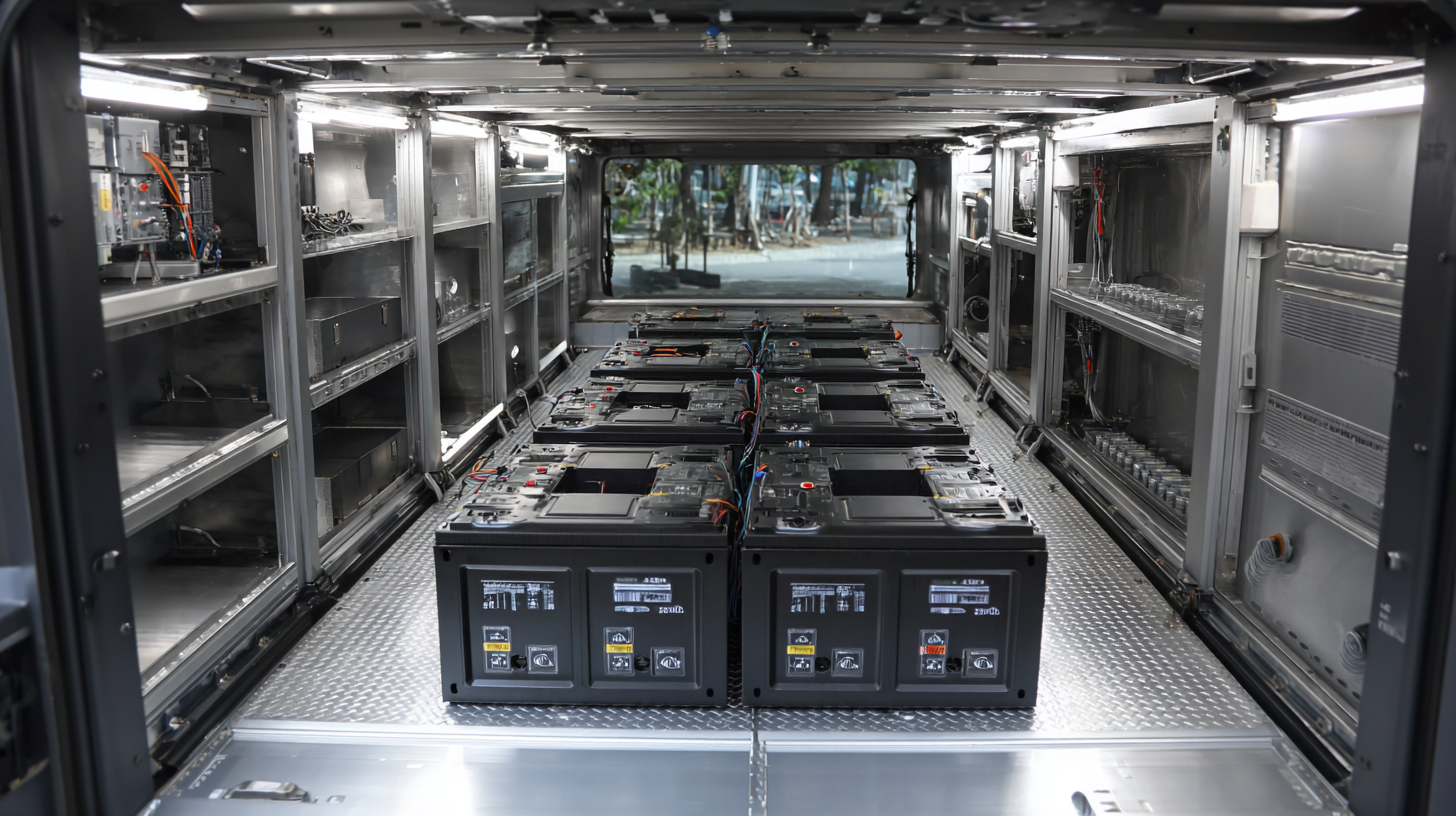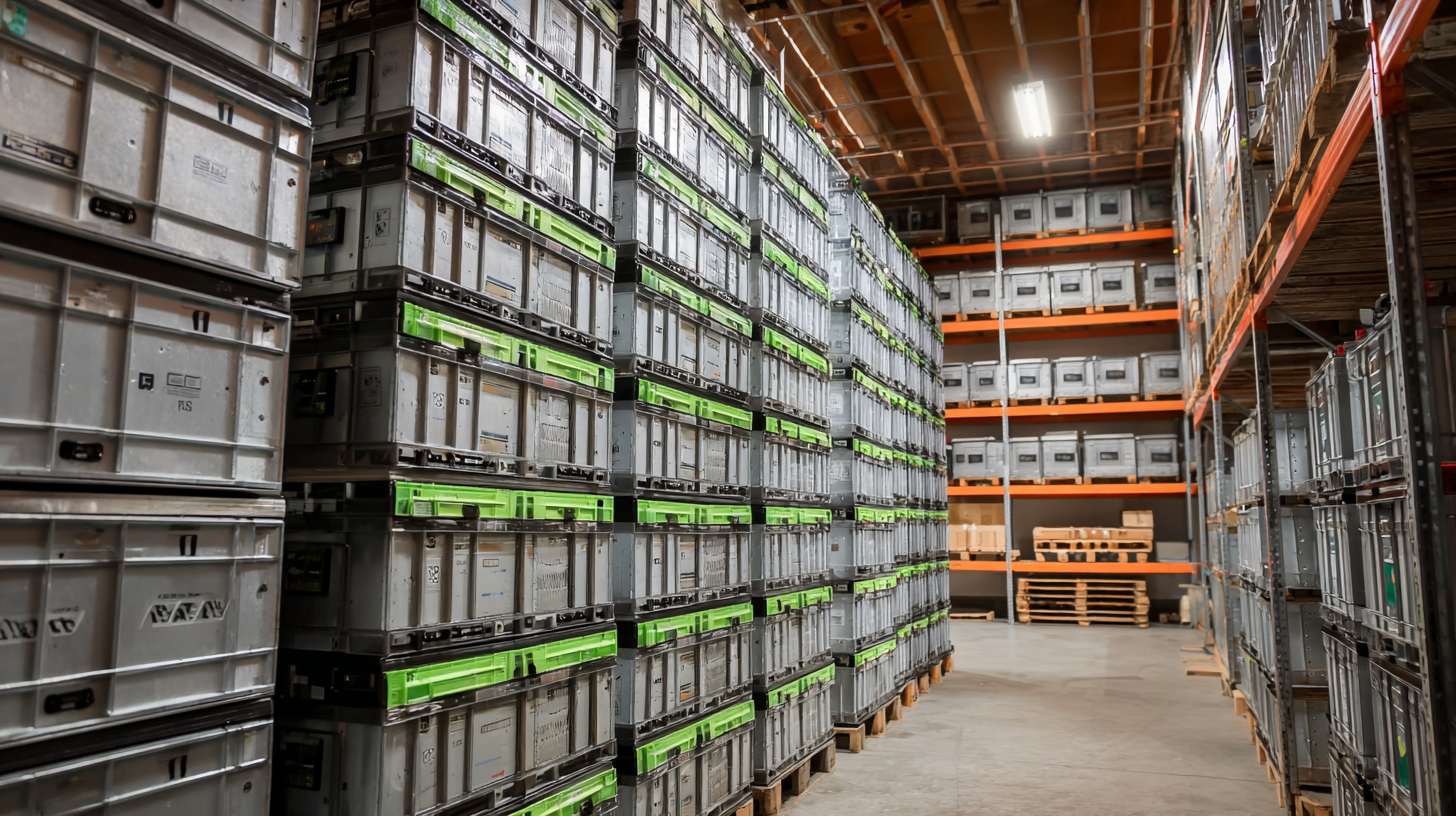
-
Home
-
Company
-
Products
-
News
-
FAQs
-
Blog
-
Contact
-
Phone
-
E-mail
-
Whatsapp
Leave Your Message

In the pursuit of sustainable energy solutions, the integration of advanced battery technology plays a pivotal role. One such innovation is the 51.2 V 160ah Lfp Batteries, which offer remarkable efficiency and performance for various renewable energy applications. These lithium iron phosphate batteries are not only known for their long lifespan and safety but also for their ability to optimize energy storage and management. In this guide, we will explore practical strategies to maximize the efficiency of 51.2 V 160ah Lfp Batteries, enabling you to harness the full potential of renewable resources.

Whether you are utilizing these batteries for solar energy systems, wind power, or off-grid setups, understanding how to enhance their functionality can lead to significant improvements in energy independence and cost savings. Join us as we delve into techniques that can help you achieve greater efficiency and sustainability in your renewable energy initiatives.
51.2 V 160ah LFP batteries have emerged as a vital component in renewable energy systems due to their high energy density and longevity. These lithium iron phosphate batteries are designed to provide reliable power storage, making them ideal for solar and wind energy applications. Their capacity allows for sustained energy output, ensuring that users have a consistent supply even during low generation periods.
To maximize efficiency when integrating 51.2 V 160ah LFP batteries into renewable energy systems, it is essential to consider a few practical tips. Firstly, ensure that the battery management system (BMS) is adequately configured to monitor and balance the charge across individual cells, enhancing longevity and performance. Secondly, align your energy consumption patterns with generation peaks by scheduling high-demand activities during sunny or windy periods. This strategy helps utilize renewable energy more effectively and reduces reliance on grid power.
Moreover, regularly maintaining the battery system is critical. Keeping connections clean and ensuring proper ventilation will prevent overheating and prolong the batteries' life. By understanding the intricacies of 51.2 V 160ah LFP batteries and implementing these tips, individuals can greatly enhance the efficiency and reliability of their renewable energy solutions.
Lithium Iron Phosphate (LFP) batteries are increasingly recognized for their efficiency and safety in renewable energy applications. One of the primary benefits of LFP batteries is their long cycle life, which can exceed 5,000 cycles, compared to traditional lead-acid batteries that typically offer only about 1,000 cycles. This longevity reduces the frequency of replacements, providing cost savings over time and maximizing the overall return on investment for energy storage systems. According to recent industry reports, the off-grid battery energy storage market is expected to grow significantly, with LFP batteries anticipated to capture a notable share due to their performance advantages.

Moreover, LFP batteries possess excellent thermal stability, reducing the risk of overheating and fires, a critical factor in renewable energy storage where safety is paramount. Their environmentally friendly profile further enhances their attractiveness, as they do not contain toxic elements like cadmium or lead. Additionally, the growing emphasis on reducing carbon footprints has driven the demand for sustainable energy solutions, with LFP batteries playing a vital role. The global battery energy storage market was valued at approximately $8.1 billion in 2022 and is projected to reach $30.4 billion by 2030, largely influenced by the increasing adoption of LFP technology in energy storage systems.
When utilizing 51.2 V 160 Ah LFP batteries for renewable energy solutions, optimizing battery performance and longevity is crucial for maximizing efficiency. Lithium Iron Phosphate (LFP) batteries have gained popularity due to their enhanced safety, thermal stability, and cycle life—often exceeding 3,500 cycles at 80% depth of discharge (DoD) according to industry research by the International Energy Agency (IEA). Storing energy efficiently in renewable systems requires not only robust battery technology but also strategic management techniques.
To enhance battery performance, consider implementing smart battery management systems (BMS) that monitor factors such as temperature, voltage, and charging rates. A study by the National Renewable Energy Laboratory (NREL) highlights that using a BMS can improve the battery's efficiency by up to 20%, prolonging its lifespan. Another effective strategy is to maintain optimal charging conditions; charging the battery to 100% on a regular basis can create stress that shortens its lifespan. Thus, a routine maintaining 80% charge can significantly extend usability.
**Tips:** Regularly check battery health indicators and ensure connections are clean and secure to prevent resistance losses. Implementing a thermal management system will help regulate battery temperatures, further preserving performance. Lastly, consider periodic equalization charges to balance the cells, ensuring uniform distribution of energy for consistent performance.
| Dimension | Optimal Value | Notes |
|---|---|---|
| Battery Capacity | 160 Ah | Ideal for medium to large renewable energy systems |
| Voltage | 51.2 V | Suitable for high-efficiency applications |
| Cycle Life | 3000 cycles | Longevity for deep cycle applications |
| Optimal Charging Current | 80 A | Recommended for efficient charging |
| Discharge Rate | 1C | Safe maximum discharge rate |
| Temperature Range | -20°C to 60°C | Optimal performance within this range |
| Weight | 48 kg | Manageable for installation and maintenance |
Integrating Lithium Iron Phosphate (LFP) batteries, such as the 51.2 V 160 Ah models, with renewable energy solutions can significantly enhance energy efficiency and reliability. These batteries are known for their long cycle life, thermal stability, and safety, making them an ideal choice for storing energy generated from solar and wind sources. By connecting LFP batteries to solar energy systems, homeowners and businesses can store excess electricity produced during peak sunlight hours for use at night or on cloudy days. This not only optimizes energy usage but also reduces dependence on the grid.

In addition to solar integration, LFP batteries play a crucial role in wind energy applications. The intermittent nature of wind power requires effective energy storage solutions to maintain a consistent supply. By leveraging the high discharge rates and fast charging capabilities of LFP batteries, wind energy systems can capture and store energy generated during high wind periods, ensuring that it is available during calm days. Together, these integrations support a more resilient and sustainable energy ecosystem, ultimately leading to lower energy costs and a reduced carbon footprint.
Monitoring and managing energy storage are crucial components for maximizing the efficiency of 51.2 V 160Ah LFP batteries in renewable energy systems. These batteries provide a reliable source of power, but without effective monitoring, it's easy to overlook aspects that affect their performance. Employing advanced battery management systems (BMS) can help track key parameters such as state of charge (SoC), state of health (SoH), and temperature, ensuring optimal operating conditions.
Tips for efficient energy storage management include regularly checking the performance metrics of your battery system and employing real-time monitoring tools that send alerts for anomalies. Additionally, ensure that the batteries are kept within their ideal temperature range to enhance their lifespan and functionality.
Another effective strategy is scheduling energy usage during off-peak hours when solar or wind energy production is at its peak. This aligns energy consumption with generation, maximizing storage utilization and reducing wastage. Utilizing these techniques can significantly improve the overall efficiency of energy storage using LFP batteries, paving the way for more sustainable renewable energy practices.
This chart illustrates the energy efficiency of 51.2 V 160Ah LFP batteries over various operational modes. The data reflects the efficiency percentages obtained from different usage conditions, indicating optimal performance for renewable energy solutions.





